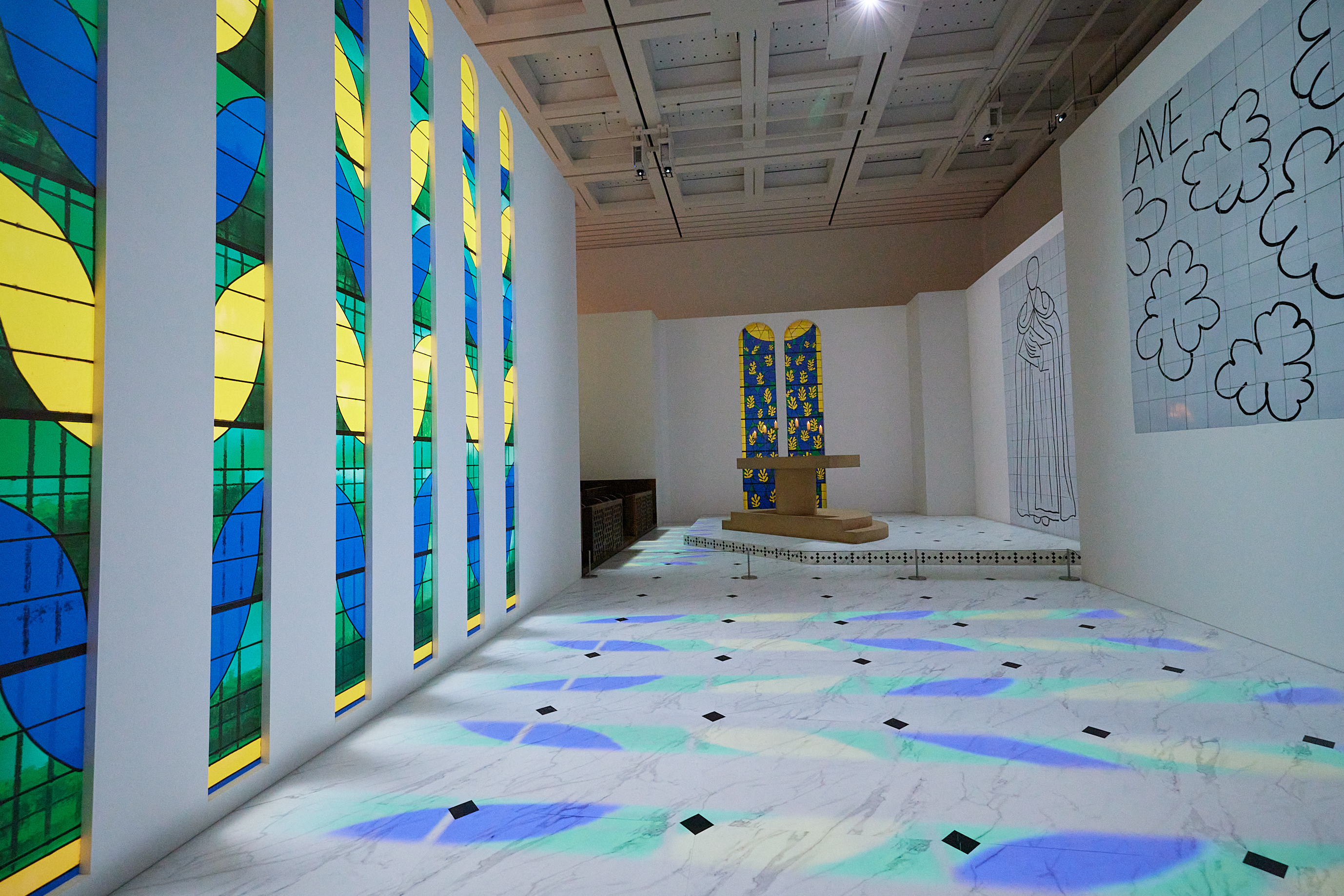HENRI MATISSE – FORMS IN FREEDOM
HAPPENINGText: Alma Reyes
Matisse’s cut-out work is also seen in the wonderful 20 plates for the album Jazz (1947), beaming with bright hues and almost childlike expressions. They were also applied on tapestries based on cut-out maquette, such as for Polynesia, the Sea (based on 1946 paper cut-outs and woven by Beauvais Manufactory, 1964). In Creole Dancer (1950), the paper cut-out female body is dressed in a palm-leaf costume over an abstract and colorful composition. Matisse was also famous for his paper-cut Blue Nudes created in 1952. Blue Nude IV (1952) is one of his notable pieces that stresses the clear blue forms on the woman’s intertwining legs and the arm stretching behind her neck.

Replica of Chapelle du Rosaire, Vence, Original design: Henri Matisse, Musée Matisse Nice © Succession H. Matisse
Finally, we enter the amazing Chapelle du Rosaire installation. The chapel remains to be one of Matisse’s most venerable accomplishments. In 1947, he was approached to design a chapel for the Dominican nuns living in the Convent of the Rosary in Vence. He was aided by Father Marie-Alain Couturier, architect August Perret, and the master glazer Paul Bony. The replica in the exhibition successfully grasps the colored light beams filtering through the blue, yellow and green stained glass windows, as they illuminate wonderful moving patterns on the floors and walls. A time-compressed video was used to emit on multiple projectors the light intensities varying by times of day. The black outlined ceramic murals are precisely interpreted: Saint Dominic on the north wall behind the altar, Virgin and Child on the north wall of the nave, and Stations of the Cross on the east wall. Matisse claimed, “This work has taken me four years of exclusive and diligent work, and it is the result of my entire working life. Despite all its imperfections I consider it to be my masterpiece.”

Henri Matisse, Stained-glass Window, Study for “The Tree of Life,” 1950, Musée Matisse Nice © Succession H. Matisse, Photo: François Fernandez
Complementing the chapel interior is a room of priest vestments, which should not be missed. Decorated in delightful colors and cut-out patterns – green, yellow, pink, blue, purple, black and white – they follow religious symbols based on the liturgical calendar.
A special corner depicts works of Matisse’s association with Japan. In particular, we find those from the 1951 exhibition “Henri Matisse: Chapel, Oil Paintings, Drawings and Illustrated Books” held at the National Museum in Tokyo and organized by Yomiuri Shimbun newspaper agency. Also on show are other works in the the same newspaper and Bungeishunju magazine.
Don’t also miss out the towering monochrome photographs on the upper walls reminiscing Matisse at work in his studios, which render realism to his creative dexterity and human approach in art and design.
Henri Matisse – Forms in Freedom
Date: February 14th – May 27th, 2024
Opening Hours: 10:00 – 18:00 (Fridays and Saturdays till 20:00)
Closed on Tuesdays (Open on April 30th)
Place: The National Art Center, Tokyo
Address: 7-22-2 Roppongi, Minato-ku, Tokyo
Tel: +81 (0)47 316 2772 (Hello Dial)
https://matisse2024.jp/outline-en/
Text: Alma Reyes
Photos: Courtesy of The National Art Center, Tokyo




